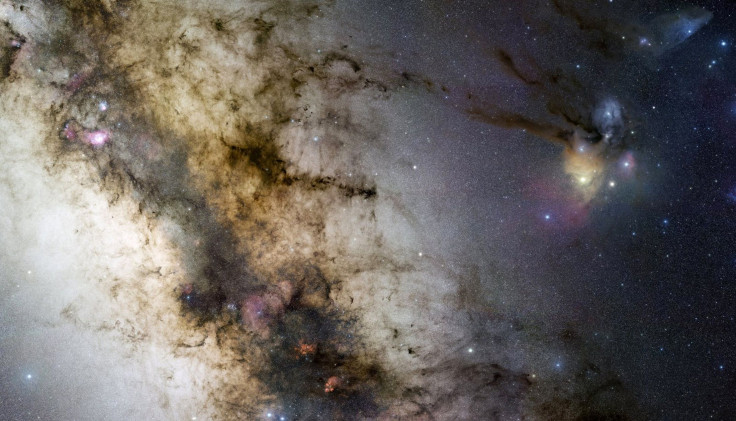Galactic Ripples Show Milky Way Is 'Corrugated,' Suggesting Galaxy's Significantly Bigger

Astronomers have long believed that the Milky Way, a spiral galaxy with over 300 billion stars, has a diameter of nearly 100,000 light-years. However, findings of a new research, published in the Astrophysical Journal, suggest that our galaxy might actually be 50 percent bigger and is rippled, rather than being a disc of stars in a flat plane.
Scientists analyzed data collected using the Sloan Digital Sky Survey and found that the “Monoceros Ring” -- a band of stars protruding beyond the galactic plane -- that wraps itself around the Milky Way, is actually a part of our galaxy. This ring, which is located over 65,000 light-years from the center of the Milky Way, was discovered in 2002, and was previously thought to be the debris of a dwarf galaxy that had ventured too close to ours.
“For 15 years, there’s been a controversy in the field where half the astronomers think it’s a tidal stream and half the astronomers think it’s something in the disk. I was in the stream camp,” Heidi Newberg from the Rensselaer Polytechnic Institute in New York, and a co-author of the paper, told Discovery News. “It now looks to me like it’s part of the disc.”
The new findings change our current understanding of the structure of the Milky Way. They reveal a galactic disc that is not stretched along a plane, but is contoured into concentric ripples with ridges and grooves. “As it radiates outward from the sun, we see at least four ripples in the disk of the Milky Way. While we can only look at part of the galaxy with this data, we assume that this pattern is going to be found throughout the disk,” Newberg said, in a statement.
As a result, when observed from our position in the galaxy, the galactic plane appears puckered --alternating between crests and troughs. This ripple-like structure means that the Milky Way is at least 50 percent larger than previously thought.
So what could have caused these ripples? According to the researchers, a dwarf galaxy or a lump of dark matter plunging through the disc could have given rise to the pattern -- much like a pebble dropped in a pond triggers a wave radiating outward from the point of impact. If this is true, the ripples could provide scientists a method to study the distribution of dark matter, which constitutes over 84 percent of the universe’s mass, in the Milky Way.
© Copyright IBTimes 2025. All rights reserved.





















